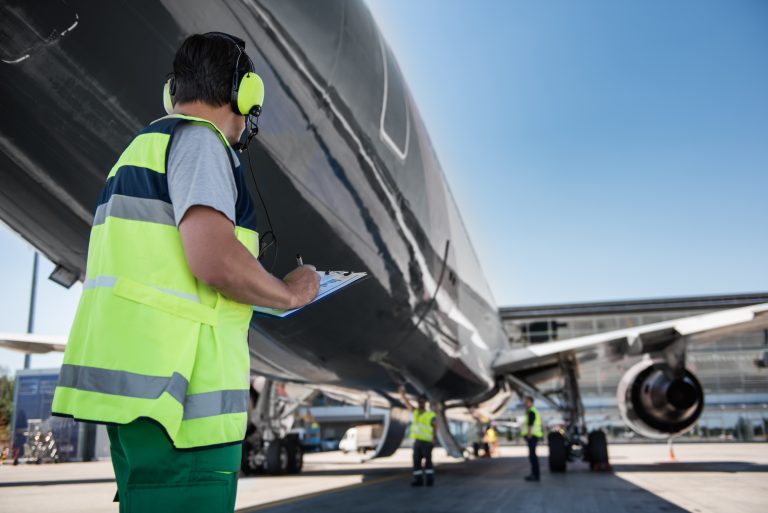One observable trend in the aviation industry nowadays is an increasing emphasis on sustainability. Aircraft maintenance is a crucial aspect of this industry, and incorporating sustainable practices in this field is essential to balancing efficiency with environmental responsibility. As the world becomes more aware of the environmental impact of human activities, the aviation sector is under pressure to reduce its carbon footprint and adopt greener practices. Leveraging advanced technology One key area where sustainability can be improved is through the adoption of advanced technologies and materials. For instance, using lighter materials in aircraft manufacturing can significantly reduce fuel consumption and emissions. Moreover, adopting innovative aerospace manufacturing techniques can create more efficient and environmentally friendly aircraft components. Energy-efficiency Another essential aspect of sustainable aircraft maintenance is the implementation of energy-efficient practices in maintenance operations. This includes using renewable energy sources to power maintenance facilities and adopting energy-saving measures in everyday operations. For example, LED lighting and energy-efficient HVAC systems can drastically reduce the energy consumption of maintenance hangars. Recycling Recycling and waste management are also critical components of sustainable aircraft maintenance. Proper disposal and recycling of hazardous materials, such as used oil, batteries, and other chemicals, can prevent environmental contamination. To facilitate responsible disposal, locating services like ‘oil disposal near me’ can simplify the process and help reduce transport-related emissions. Additionally, recycling parts and materials from decommissioned aircraft can reduce the demand for new raw materials and decrease the overall environmental impact of aircraft maintenance activities. Optimizing digital capabilities Using digital tools and predictive maintenance techniques is another way to enhance sustainability in aircraft maintenance. By leveraging data analytics and machine learning, maintenance teams can predict and address potential issues before they become serious problems. This proactive approach improves the efficiency and safety of aircraft maintenance and reduces the environmental impact by minimizing the need for emergency repairs and unscheduled maintenance. Training Training and educating maintenance personnel on sustainable practices is also essential. By instilling a culture of sustainability within the maintenance workforce, companies can ensure that environmentally responsible practices are consistently followed. This includes proper handling and disposal of materials, energy-efficient operations, and adopting new technologies and techniques that promote sustainability. Challenges in implementing sustainable practices for aircraft maintenance Implementing sustainability measures in aircraft maintenance presents several challenges the industry must address to achieve more eco-friendly operations. These challenges include: High initial costs One of the primary challenges is the significant upfront investment required for sustainable technologies and practices. Adopting advanced materials, energy-efficient systems, and digital tools can be costly. Many companies may struggle to justify these expenditures without immediate financial returns. Technological integration Integrating new, sustainable technologies with existing maintenance systems and infrastructure can be complex. Older facilities may require substantial upgrades to accommodate new energy-efficient equipment or digital maintenance tools, which can be time-consuming and expensive. Regulatory compliance Navigating the regulatory landscape is another challenge. Different regions have varying environmental regulations, and ensuring compliance with all relevant standards can be complicated. Additionally, new laws may require changes to existing practices, which can take time to implement. Supply chain issues Establishing a sustainable supply chain can be challenging. Sourcing eco-friendly materials and components may only sometimes be straightforward, and suppliers might not always meet the required environmental standards. Ensuring the supply chain adheres to sustainability principles requires significant effort and coordination. Economic pressures The aviation industry is highly competitive, and economic pressures can make it challenging to prioritize sustainability. Airlines and maintenance providers often focus on cost reduction and operational efficiency, sometimes conflicting with the investment needed for sustainable practices. Resistance to change There can be resistance to change within organizations. Employees and management accustomed to traditional maintenance practices might hesitate to adopt new, sustainable methods. Overcoming this resistance requires strong leadership and a clear commitment to sustainability from the top down. Measurement and reporting Measuring the impact of sustainability initiatives and reporting on progress can be challenging. Accurate data collection and analysis are essential to demonstrate the benefits of sustainable practices, but this requires robust systems and processes, which can be difficult to establish and maintain. Uncertainty and risk Implementing new technologies and practices involves a degree of uncertainty and risk. Companies may be concerned about the reliability and effectiveness of new solutions, especially if they are unproven on a large scale. Managing these risks requires careful planning and a willingness to adapt as needed. Despite these challenges, the aviation industry strives for more sustainable aircraft maintenance. By addressing these obstacles through collaboration, innovation, and a solid commitment to environmental responsibility, the sector can significantly reduce its environmental impact. Conclusion Sustainable practices in aircraft maintenance are crucial for balancing efficiency and environmental responsibility. The aviation industry can significantly reduce its environmental impact by adopting advanced technologies, improving energy efficiency, managing waste effectively, and leveraging digital tools. As the industry continues to evolve, the commitment to sustainability in aircraft maintenance will play a vital role in shaping a greener and more efficient future for aviation.





